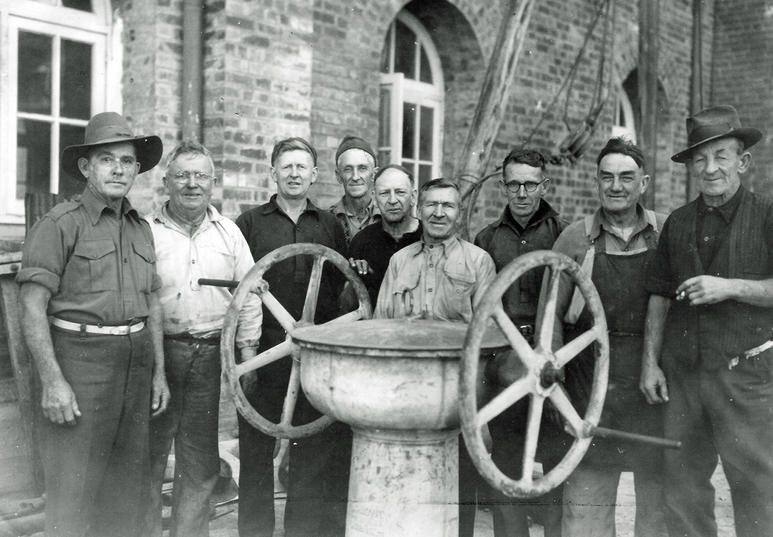Flashback Fridays: Privatisation and Private Industry

In this final post of the Flashback Fridays series in the lead up to our Annual Forum next week, we focus on the key role that the private industry, and particularly engineering consultants, have played in the development of urban water and sewerage services in Queensland.
Even at times when councils and/or the State Government have had capable engineering staff, the services of contractors and consultants have been critical at all stages of design, construction, commissioning and in some cases operation of water and sewerage infrastructure.
This symbiotic relationship has existed since the initial days of Queensland’s waterworks. The longevity of the relationship is further complicated by mobility of very good staff among State and Local Government and the private industry.
Stronger privatisation of water and sewerage services has been suggested on many occasions since the inception of the industry. In the 1860s the suggestion that water services should be privatised was raised and subsequently discarded by the parliament of the day. Despite many successful examples of privatisation of water and sewerage services around the world, the Queensland community in general is opposed to privatisation. The current situation in the United Kingdom (2023) may prove to be another nail in the coffin for the idea of privatisation elsewhere.
A common view appears to reflect water as a public good as recorded in the Queensland Parliament when the first suggestion was put forward in 1865 (see box below).

A greater focus on commercialisation was encouraged by the reforms of the Council of Australian Governments (COAG) water agreements commencing in the 1990s.
Increased commercialisation and private-public partnerships have increased in Queensland in the last three decades. However, the level of commercial independence envisaged at the end of the last century is a long way from being realised, and the benefits recorded from private industry involvement in other States and internationally will take longer to be realised in many parts of Queensland.
Finally, the importance that the press has played in the development of the industry should not be underrated. Given the strong ownership of water services by Local and State Government, many of the decisions that have advanced (or retarded) development of the industry have been driven politically, and the press has played an important if not always entirely impartial role in raising and championing water issues. Pricing (in SEQ at least) is a primary example.
The involvement of the media as well as politicians and bureaucrats in three levels of Government along with the private industry makes the urban water industry a richly complex historical landscape deserving of a more in-depth review than is possible here.
Most importantly the tensions created by this multidisciplinary melange must not drown out the voices of the most important stakeholders in the industry, namely Queensland’s varied and dispersed urban communities.
Feature image: Pumping station workers circa 1940, courtesy of the Mt Crosby Historical Society
Back to list